Pirouette Flips
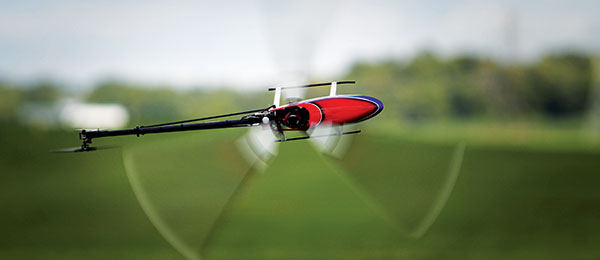
Written by Mark Fadely Why all the hype? RC Helicopters Column As seen in the February 2013 issue of Model Aviation.
I want to revisit a popular maneuver this month. It appears that many pilots want to learn how to do a piroette flip. I can’t tell you how many times I have been asked, “How do you do a piro flip?” The proper name of the trick is pirouetting flip. Most RC aerobatic helicopters are capable of performing the maneuver. It does not require an aircraft with a lot of power or aggressive capabilities. However, this maneuver tops the list of discussions about heli moves. A picture is worth a thousand words, so I included a visual representation of the maneuver with corresponding stick movements for you to review. The simulator was fired up and stick stirring ensued. As with many complicated maneuvers, piro flips seem easy once you have them mastered. However, they appear nearly impossible during the early learning stages. I recommend getting a simulator and practicing this complicated move until your thumbs are numb. There is no substitute for practice. The piro flip is like no other maneuver and involves a sophisticated control-input sequence. Often, a pilot begins doing piro flips by using timing and a basic knowledge of the required stick inputs.
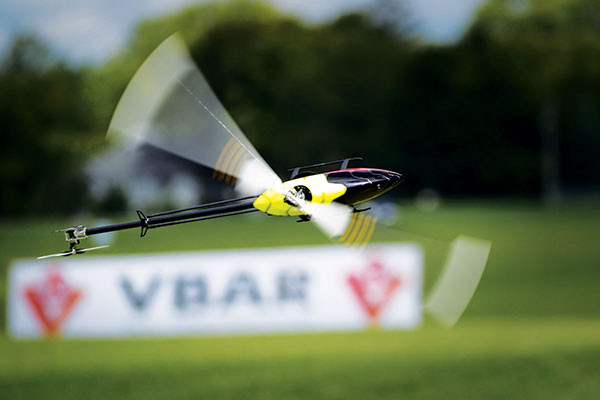
Kyle Dahl is another top pilot with a refined piro-flip technique. He is a past winner of both the 3D Masters and the Extreme Flight Championships.
This is a dangerous way to try the trick on a real aircraft. It is risky because if your timing is slightly off, the heli may end up in an attitude foreign to the pilot and crash. As with all maneuvers, the pirouetting flip can be broken down into segments that can be learned as small parts of the full maneuver. The basic control inputs on a Mode 2 transmitter are to stir the right (cyclic) stick while the left stick (rudder) is deflected and held to perform a constant yaw rotation.
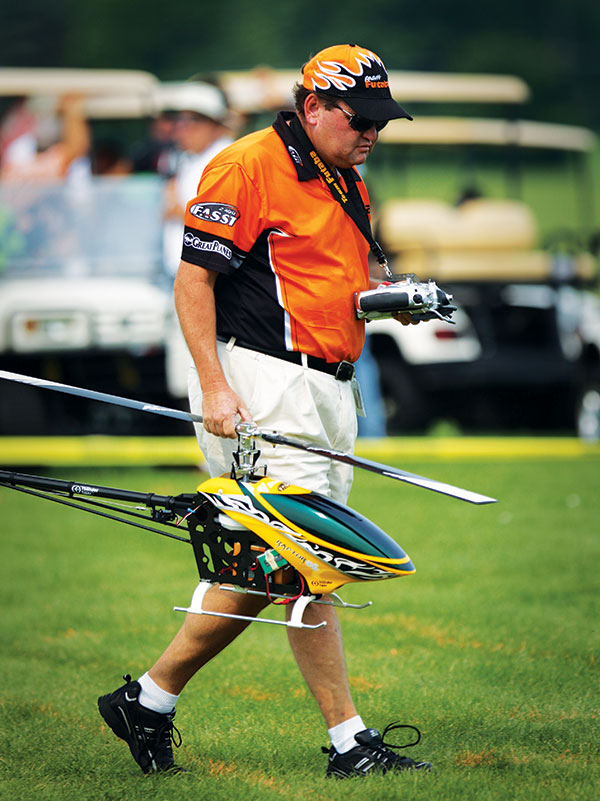
Gary Wright walks out to the flightline at the 2012 International Radio Controlled Helicopter Association (IRCHA) Jamboree. He was the first person to do beautiful, symmetrical pirouetting loops, which are a variant of a piro flip.
While these control inputs are being executed, the helicopter will flip while the tail is spinning. The pilot then needs to coordinate the positive and negative collective to maintain a constant altitude. The rotation of the cyclic stick has to match up with the rotation of the heli at all times or the maneuver will go awry. The synchronization of the cyclic is the most difficult thing for pilots to master. They usually ask, “Should I watch the nose or the tail to stay in sync?” It doesn’t matter which end of the heli you key in on, as long as you remain consistent. As soon as you input a few wrong stick positions, the helicopter heads out of control in a hurry. The picture from my simulator shows the limited amount of stick input throughout the maneuver. That is a surprise to most pilots.
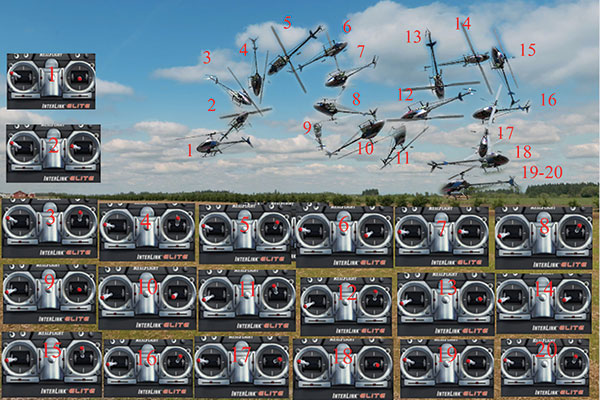
This diagram is taken from a simulator screen shot. The simulator is the best way to prepare to take on a maneuver as difficult as the piro flip.
When you watch a piro flip being performed, it seems as though plenty of control is required. However, the opposite is true. The images of the heli in the illustration have been spread out so that you can better see the orientations. In a real-world example of the maneuver, the helicopter should stay in the same space and perform the flip around itself with no altitude or horizontal position changes. The pirouetting flip in the picture is a two-piro version. That means there is one pirouette during the first half flip, and then another full pirouette during the second half flip. The heli then ends up in the same orientation as it started. When I first learned the trick, I did the single-piro type, which has only one pirouette for the entire flip. The single-piro requires more cyclic input and the load is much higher on the motor and helicopter. The two- or three-piro-per-flip versions are more elegant and pretty to watch. So, it’s time to take your favorite aircraft out and start doing some piro flips, right? No. You must be cautious when attempting these for the first time. Although you may feel confident on the simulator, I guarantee you will be nervous when you try these difficult maneuvers with your helicopter.
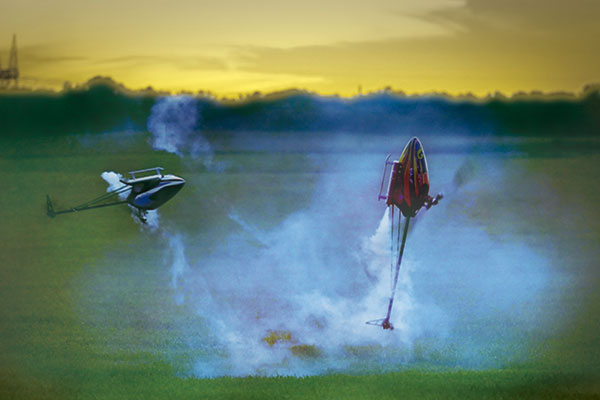
Two friends from France put on an impromptu piro-flipping exhibition one evening at the 2012 IRCHA Jamboree.
Make sure to go high—at least three mistakes high—and then start gently working your way into the piro flip. It may get frustrating and feel as though you are not progressing. Take breaks to give your mind a rest, too. That is very important. Doing a maneuver such as this will be a mental workout the first few times. As always, be safe. I hope the illustration will help some of you better understand the nuances of this difficult and exciting maneuver. Remember, don’t be afraid to ask other pilots for help when you are attempting to learn something new. That is it for this month. I hope you return to read more about RC helicopters next month. -Mark Fadely [email protected]










1 comments
Piroflips by the numbers
Add new comment